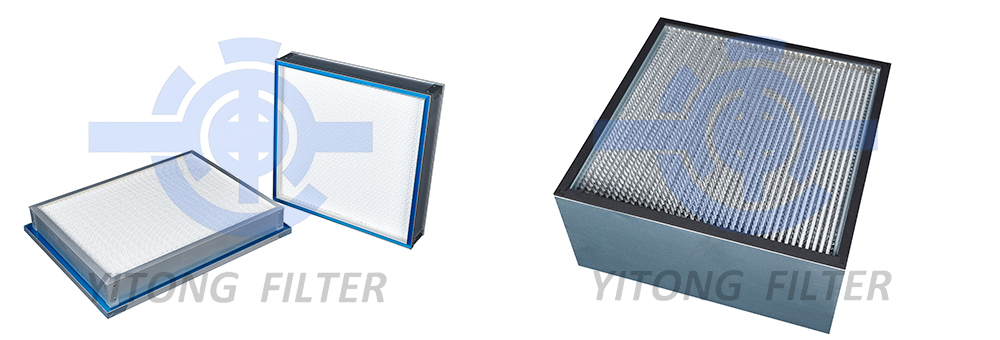Do you understand HEPA Filter?
The HEPA filter is an essential component of cleanrooms and ventilation systems.
The removal efficiency of HEPA filters is exceptionally high, especially for fine particles. They can effectively remove smoke, dust, and even contaminants like bacteria. As a result, they have a high market demand. Even particles as small as 0.3 micrometers in diameter cannot penetrate this type of filter.
From a technical standpoint, HEPA filters come in different materials, including PP filter paper, glass fibers, and melt-blown polyester non-woven fabrics, among others. These different materials give rise to various manufacturing processes and result in large dust-holding capacities. These filters exhibit high overall filtration precision and can also be customized.
After receiving size and shape requirements from customers, manufacturers process and treat the filters accordingly to meet their specific needs. Currently, HEPA filters find applications in various environments, including operating rooms, animal facilities, crystal laboratories, and even aviation-related settings.
The technological features of HEPA filters are worth studying. They use seamless sealing technology to ensure excellent sealing effects, significantly prolonging their lifespan and virtually eliminating leakage issues. If one observes the filter material, they will notice the incorporation of metal mesh with varying thickness on both sides. Adjustments can be made based on the usage environment, and efficiency can be assessed using relevant industry standards as references.
HEPA filters come in two common structural types: Mini-pleat and Separator.
The Mini-pleat HEPA filter structure refers to the design where the HEPA filter's interior is divided into multiple small compartments with separators. Each compartment serves as an independent filtration unit. This structure effectively increases the filtration area and prevents the failure of one unit from affecting the entire filter's operation. Moreover, the Mini-pleat structure enhances the stability and lifespan of the filter. In practical applications, Mini-pleat HEPA filters are often used in places requiring high airflow and high filtration levels, such as cleanrooms and medical laboratories.
The Separator HEPA filter structure lacks the Mini-pleat design inside the HEPA filter. This structure is relatively simple and lacks the limitations of compartments, leading to a more uniform filtration effect. Additionally, Separator-structured filters are more suitable for handling lower air volumes. Consequently, in settings where low resistance and moderate to low airflow are needed, like ventilation and air conditioning systems and electronics factories, Separator-structured HEPA filters are more common.
Considering these two different HEPA filter structures, the Mini-pleat structure suits places requiring high airflow and high filtration levels, while the Separator structure is more appropriate for medium to low airflow settings. Selecting the appropriate structure type ensures that HEPA filters deliver optimal filtration efficiency and performance in various application environments.
The Mini-pleat and Separator structures of HEPA filters have certain design and application differences. Understanding these distinctions can help us make better choices and use HEPA filters effectively, enhancing the filtration efficiency and air quality of cleanrooms and ventilation systems.
If you'd like to learn more about HEPA filters, feel free to contact us anytime. We'll provide answers and services to meet your needs.
